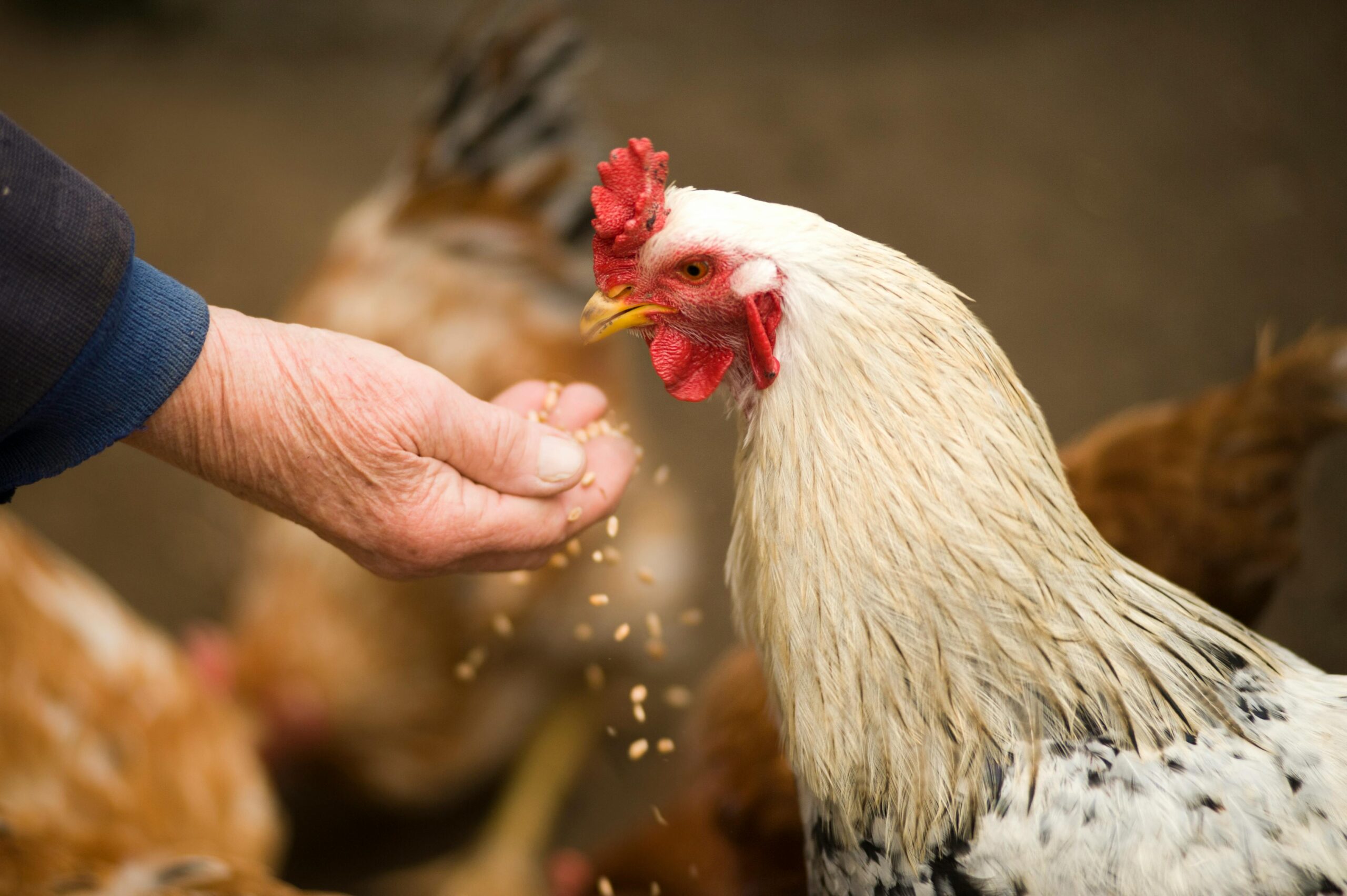The Ultimate Guide to Caring for a Fish
Introduction
Fish are one of the most popular pets due to their beauty, variety, and relative ease of care. However, maintaining a healthy and vibrant aquarium requires knowledge and commitment. This comprehensive guide will cover all aspects of fish care, from setting up the tank to feeding, health care, and routine maintenance. By following these guidelines, you can ensure your fish thrive and your aquarium remains a beautiful and healthy environment.
Understanding Fish and Their Needs
Types of Fish
There are many types of fish, each with specific care requirements. Some popular categories include:
- Freshwater Fish: Common types include goldfish, bettas, guppies, and cichlids.
- Saltwater Fish: Common types include clownfish, tangs, and angelfish.
- Brackish Water Fish: These fish, such as mollies and scats, live in water with a salinity between freshwater and saltwater.
Basic Needs of Fish
Regardless of the type, all fish have similar basic needs:
- Clean Water: Regularly changed and filtered water is crucial.
- Proper Diet: A balanced diet suited to their species.
- Stable Environment: Proper tank setup, including temperature, pH, and lighting.
- Space: Adequate room to swim and explore.
Setting Up Your Fish Tank
Choosing the Right Tank
Selecting the appropriate tank is the first step in fish care.
- Size: Larger tanks are generally easier to maintain and provide more stable water conditions.
- Material: Glass or acrylic tanks are common, each with pros and cons.
- Shape: Traditional rectangular tanks are the most practical.
Essential Equipment
Equip your tank with the necessary tools for maintaining a healthy environment.
- Filter: Essential for removing waste and maintaining water quality.
- Heater: Keeps the water temperature stable, crucial for tropical fish.
- Lighting: Supports plant growth and enhances the appearance of the tank.
- Air Pump: Increases oxygen levels in the water.
- Substrate: Gravel, sand, or specialized substrate for plants.
- Decorations: Provides hiding spots and reduces stress for fish.
Setting Up the Tank
Cleaning the Tank and Equipment
Before setting up, thoroughly clean the tank and all equipment with water (no soap).
Adding Substrate and Decorations
- Substrate: Rinse thoroughly before adding to the tank.
- Decorations: Rinse all decorations and place them in the tank to create hiding spots and visual interest.
Filling the Tank
Fill the tank with dechlorinated water to the appropriate level. Use a water conditioner to remove harmful chemicals from tap water.
Installing Equipment
- Filter and Heater: Install according to the manufacturer’s instructions.
- Lighting: Place on top of the tank, ensuring it provides adequate coverage.
Cycling the Tank
Before adding fish, cycle the tank to establish beneficial bacteria.
- Fishless Cycling: Add ammonia to the tank and monitor levels until beneficial bacteria convert it to nitrite and then nitrate.
- Testing Water: Use a water testing kit to monitor ammonia, nitrite, and nitrate levels.
Selecting Your Fish
Researching Fish Species
Research the specific needs and compatibility of the fish species you are interested in.
- Compatibility: Ensure the fish you choose are compatible with each other.
- Size and Growth: Consider the adult size of the fish to avoid overcrowding.
- Behavior: Some fish are more aggressive or territorial than others.
Acclimating New Fish
Proper acclimation is crucial to reduce stress and prevent shock.
- Floating the Bag: Float the sealed bag in the tank for 15-20 minutes to equalize temperatures.
- Gradual Introduction: Slowly add small amounts of tank water to the bag over 30 minutes.
- Releasing Fish: Gently release the fish into the tank, avoiding adding the bag water.
Feeding Your Fish
Types of Fish Food
Provide a balanced diet tailored to your fish species.
- Flake Food: Suitable for most small fish.
- Pellets: Available in sinking or floating varieties for different feeding habits.
- Frozen and Live Food: Enhances diet with natural proteins.
- Vegetables: Blanched vegetables like spinach or peas for herbivorous fish.
Feeding Schedule
Establish a regular feeding schedule to maintain fish health.
- Frequency: Feed 1-2 times a day.
- Portion Size: Only feed what the fish can consume in 2-3 minutes to avoid overfeeding.
Special Dietary Needs
Some fish have specific dietary requirements.
- Carnivorous Fish: Require a diet rich in protein.
- Herbivorous Fish: Need a diet with more plant matter.
- Omnivorous Fish: Require a balanced diet of both plant and animal matter.
Maintaining Water Quality
Regular Water Testing
Regularly test the water to ensure a healthy environment.
- Parameters: Monitor ammonia, nitrite, nitrate, pH, and hardness.
- Testing Kits: Use reliable test kits for accurate results.
Water Changes
Perform regular water changes to maintain water quality.
- Frequency: Change 10-20% of the water weekly.
- Method: Use a gravel vacuum to remove debris and siphon out water.
Filter Maintenance
Regularly clean and maintain the filter to ensure it operates efficiently.
- Sponges and Media: Rinse filter sponges and media in tank water to preserve beneficial bacteria.
- Replacement: Replace filter media as recommended by the manufacturer.
Controlling Algae
Algae can be a common issue in aquariums.
- Light Management: Limit light exposure to 8-10 hours a day.
- Algae Eaters: Introduce algae-eating fish or invertebrates.
- Manual Removal: Scrub algae from the glass and decorations as needed.
Health Care for Fish
Recognizing Signs of Illness
Early detection of illness is crucial for treatment.
- Behavioral Changes: Lethargy, erratic swimming, or hiding.
- Physical Symptoms: Spots, lesions, clamped fins, or rapid breathing.
Common Fish Diseases
Be aware of common fish diseases and their treatments.
- Ich: White spots on the body and fins; treat with temperature increase and medication.
- Fin Rot: Frayed or decaying fins; improve water quality and use antibiotics.
- Swim Bladder Disease: Difficulty swimming; adjust diet and water parameters.
Quarantine Procedures
Quarantine new fish or sick fish to prevent the spread of disease.
- Separate Tank: Use a separate, smaller tank for quarantine.
- Observation: Monitor for 2-4 weeks before introducing to the main tank.
Preventive Care
Maintain a healthy environment to prevent disease.
- Regular Maintenance: Keep the tank clean and well-maintained.
- Balanced Diet: Provide a nutritious diet to boost immunity.
- Stable Conditions: Avoid sudden changes in temperature or water chemistry.
Handling and Interacting with Fish
Minimizing Stress
Handle fish as little as possible to minimize stress.
- Use a Net: When moving fish, use a soft net to avoid injury.
- Gentle Handling: Be gentle to avoid stressing or harming the fish.
Interaction and Enrichment
Provide enrichment to keep fish active and engaged.
- Varied Environment: Change decorations occasionally to provide new exploration opportunities.
- Feeding Enrichment: Use feeding rings or hide food to encourage natural behaviors.
Breeding Fish
Preparing for Breeding
Research the breeding habits of your fish species.
- Breeding Tank: Set up a separate tank for breeding if necessary.
- Conditioning: Provide a high-quality diet to condition fish for breeding.
Breeding Process
Understand the specific breeding process of your fish.
- Spawning: Many fish lay eggs, while some give live birth.
- Parental Care: Some species provide care for their young, while others do not.
Raising Fry
Care for the fry (baby fish) appropriately.
- Separate Tank: Keep fry in a separate tank to protect them from being eaten.
- Special Diet: Feed fry specialized food suitable for their size.
Traveling with Fish
Preparing for Travel
Ensure your fish are safe and comfortable during travel.
- Secure Containers: Use bags or containers designed for transporting fish.
- Oxygen Supply: Ensure the containers are filled with enough oxygen.
- Temperature Control: Keep the containers at a stable temperature.
During Travel
Minimize stress and maintain stable conditions.
- Avoid Vibrations: Secure containers to prevent excessive movement.
- Dark Environment: Keep the containers in a dark, quiet place to reduce stress.
Long-Term Care and Monitoring
Lifespan Considerations
Understand the lifespan of your fish species and plan for their long-term care.
- Research: Know the average lifespan of your fish to provide appropriate care throughout their life stages.
Regular Health Checks
Perform regular health checks to monitor fish well-being.
- Observation: Regularly observe fish for signs of stress or illness.
- Water Testing: Keep a log of water parameters to detect any changes.
Upgrading Equipment
Upgrade equipment as needed to accommodate growing fish or improve tank conditions.
- Larger Tank: Consider a larger tank as fish grow.
- Enhanced Filtration: Upgrade the filter to maintain water quality in a larger tank.
Seasonal Considerations
Adjust care routines based on seasonal changes.
- Temperature Adjustments: Maintain stable temperatures during extreme weather.
- Light Cycle: Adjust lighting to mimic natural seasonal changes.
Common Myths About Fish Care
Fish Only Grow to the Size of Their Tank
Fish will grow to their genetic potential if properly cared for, regardless of tank size.
Fish Do Not Require Regular Water Changes
Regular water changes are essential for maintaining water quality and fish health.
All Fish Can Live Together Peacefully
Not all fish are compatible. Research compatibility before adding new fish to the tank.
Goldfish Can Live in Bowls
Goldfish require large, filtered tanks to thrive and should not be kept in bowls.
Frequently Asked Questions
How often should I feed my fish?
Feed your fish 1-2 times a day, providing only what they can consume in 2-3 minutes.
What temperature should my fish tank be?
Temperature requirements vary by species, but most tropical fish thrive between 75-80°F.
How do I clean my fish tank?
Perform regular water changes, clean the glass with an aquarium-safe scraper, and rinse decorations and filter media with tank water.
Why is my fish hiding?
Fish may hide due to stress, illness, or environmental changes. Ensure water quality and tank conditions are optimal.
How can I prevent algae growth in my tank?
Control light exposure, maintain good water quality, and introduce algae-eating species.
What should I do if my fish looks sick?
Quarantine the sick fish, check water parameters, and consult a veterinarian or aquatic specialist for treatment options.
Can I use tap water for my fish tank?
Yes, but treat it with a water conditioner to remove chlorine and chloramines.
Why are my fish not eating?
Loss of appetite can indicate stress, illness, or unsuitable water conditions. Check water parameters and observe for other signs of distress.
How can I tell if my fish is stressed?
Signs of stress include erratic swimming, hiding, loss of appetite, and changes in coloration.
Do fish need light at night?
Fish do not need light at night. Provide a regular light cycle of 8-10 hours of light per day.
What is the best way to introduce new fish to my tank?
Acclimate new fish slowly by floating the bag in the tank, adding small amounts of tank water over 30 minutes, then releasing the fish gently.
How often should I test my aquarium water?
Test your aquarium water weekly to monitor ammonia, nitrite, nitrate, pH, and hardness levels.
Can I keep different species of fish together?
Yes, but ensure they are compatible in terms of temperament, size, and environmental needs.
Why is my fish tank water cloudy?
Cloudy water can be due to a bacterial bloom, overfeeding, or poor filtration. Perform water changes and check the filter.
How do I treat ich in my fish tank?
Raise the temperature to 86°F for several days and use a medication specifically designed to treat ich.
What are the signs of good fish health?
Healthy fish are active, have bright colors, eat regularly, and have no visible signs of illness.
How can I reduce fish tank maintenance?
Maintain a regular cleaning schedule, avoid overfeeding, and ensure proper filtration.
Why is my fish swimming at the surface?
Fish may swim at the surface due to low oxygen levels, high ammonia, or other water quality issues. Ensure adequate aeration and test water parameters.
Can I use live plants in my fish tank?
Yes, live plants provide oxygen, reduce nitrates, and create a natural environment for fish.
How do I handle aggressive fish?
Provide hiding spots, ensure adequate space, and separate aggressive fish if necessary.
Why are my fish fighting?
Fish may fight due to territorial disputes, overstocking, or incompatible species. Provide ample space and hiding spots.
Can fish recognize their owners?
Some fish can recognize their owners and may respond to their presence.
What should I do if my fish tank heater breaks?
Replace the heater immediately to maintain stable water temperature.
How long should I quarantine new fish?
Quarantine new fish for 2-4 weeks to ensure they are healthy before introducing them to the main tank.
What are the benefits of having an aquarium?
Aquariums can reduce stress, provide educational opportunities, and enhance home decor.
How do I choose the right filter for my tank?
Choose a filter based on tank size, type of fish, and filtration needs (mechanical, chemical, biological).
Why is my fish tank water turning green?
Green water is often caused by an algae bloom. Reduce light exposure, perform water changes, and consider using an algae control product.
Can fish get bored?
Fish can become bored in a monotonous environment. Provide enrichment with decorations, plants, and varied feeding routines.
How do I prevent fish from jumping out of the tank?
Use a tank lid or cover and ensure water conditions are optimal to reduce stress.
What is the nitrogen cycle and why is it important?
The nitrogen cycle is the process of converting toxic ammonia into less harmful nitrite and nitrate. It’s crucial for maintaining a healthy aquarium.
Can I keep a single fish alone?
Some fish, like bettas, can be kept alone, while others, like schooling fish, need to be in groups.
How do I know if my fish is lonely?
Fish that are social species may show signs of stress or inactivity if kept alone.
What should I do if my fish is gasping for air?
Check for low oxygen levels, poor water quality, or disease. Ensure proper aeration and test water parameters.
How do I transition my fish tank from freshwater to saltwater?
Gradually increase the salinity while ensuring proper filtration and water quality adjustments.
What is the best way to acclimate fish to a new tank?
Float the bag, add tank water gradually, and release the fish gently after 30 minutes.
How do I know if my fish tank filter is working properly?
Check for adequate water flow, clean media, and no unusual noises. Test water quality regularly.
What should I do if my fish tank water smells bad?
Perform a water change, clean the tank, check for dead fish or decaying matter, and ensure proper filtration.
Can I use distilled water in my fish tank?
Distilled water lacks essential minerals. Mix it with tap water or add a remineralizer.
How can I tell if my fish tank heater is working?
Use a reliable aquarium thermometer to check the water temperature regularly.
Do fish need constant aeration?
Most fish benefit from constant aeration to maintain oxygen levels. Use an air pump or ensure good water circulation.
What are the benefits of having a planted aquarium?
Planted aquariums provide oxygen, reduce nitrates, create a natural habitat, and enhance the tank’s aesthetic.
How do I prevent overfeeding my fish?
Feed small amounts they can consume in 2-3 minutes and avoid feeding more than twice a day.
What is the best way to clean algae from my fish tank?
Use an algae scraper for the glass, clean decorations, and maintain good water quality.
How do I introduce a new fish to an established tank?
Acclimate slowly by floating the bag, adding tank water gradually, and observing for compatibility.
Can I use tap water for my fish tank?
Yes, but treat it with a water conditioner to remove chlorine and chloramines.
What should I do if my fish is not swimming properly?
Check for swim bladder issues, poor water quality, or disease. Consult a veterinarian if necessary.
How do I choose the right fish for my tank size?
Research the adult size and space requirements of fish to avoid overcrowding and ensure a healthy environment.
Conclusion
Caring for a fish involves more than just providing food and water. It requires a commitment to maintaining a clean and stable environment, understanding the specific needs of your fish, and being vigilant about their health. By following the guidelines outlined in this comprehensive guide, you can create a thriving aquarium that provides a healthy and enriching environment for your fish. With proper care and attention, your fish can live long, healthy, and fulfilling lives, bringing joy and beauty to your home.


